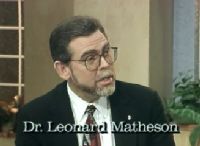

$74.00
Returning to work after a painful injury can be very difficult if the pain persists and becomes disabling itself
Description
Returning to work after a painful injury can be very difficult if the pain persists and becomes disabling itself. Quite often, people who are pain disabled learn maladaptive behavioral responses to pain that can cause disability to persist and may preclude return to work. Effective treatment techniques to address this problem have been developed. People who, in the past have been unable to return to work can be helped to reestablish useful lives and return to productive society.
This program describes disabling pain in terms of the “Symptom Magnification Syndrome” a learned behavioral response to chronic pain. Techniques for identification and treatment of SMS are presented.
Course Details
| Instructor(s) | |
|---|---|
| Platform | |
| Course Length |
Details
Run Time: 4 hours
Attendee: Physical Therapists, PTA’s, Students, Athletic Trainers
Required Equipment: Personal Computer, Tablet, or Smartphone with access to Broadband Internet (<1.4 mbps)
Examination: 15-question test. Passing grade of 70% or higher required for certificate
Course Evaluation: Yes
Certificate of Completion: Yes
Workbook/Handout: Yes
Course Approvals/Certifications:
Outline
Module I
Unit 01: Introduction
Unit 02: The Scope of the Problem
Unit 03: Symptom Magnification Syndrome
Unit 04: The Three Types of Symptom Magnifiers
Unit 05: How to Recognize Symptom Magnification Syndrome
Unit 06: Techniques of Identification – Part I
Unit 07: Techniques of Identification – Part II
Unit 08: Techniques of Identification – Part III
Unit 09: Techniques of Identification – Part IV
Unit 10: Question and Answer Section
Unit 11: Treatment of SMS in a Work Hardening Context
Unit 12: Interviews with the Barnes Care Team
Unit 13: What’s Needed in the Work Hardening Environment
Unit 14: Evaluation of Richard by the Barnes Care Team
Unit 15: The Conclusion of Work Hardening
Module II
Unit 16: Steps for Functional Capacity Evaluation
Unit 17: CAL-FCP Model and The Seated Test
Unit 18: Richards Standing Test Results
Unit 19: The Epic Lift Capacity Test
Unit 20: A Patients Evaluation Plan
Unit 21: The Importance of CAL-FCP Model
Unit 22: The Geographic Spread of the WH Program
Final Test
Certificate of Completion
Course Evaluation
Learning Goals
Upon completion of this class, you should be able to:
- Describe what Symptom Magnification Syndrome is
- Summarize techniques for identification and treatment of SMS

